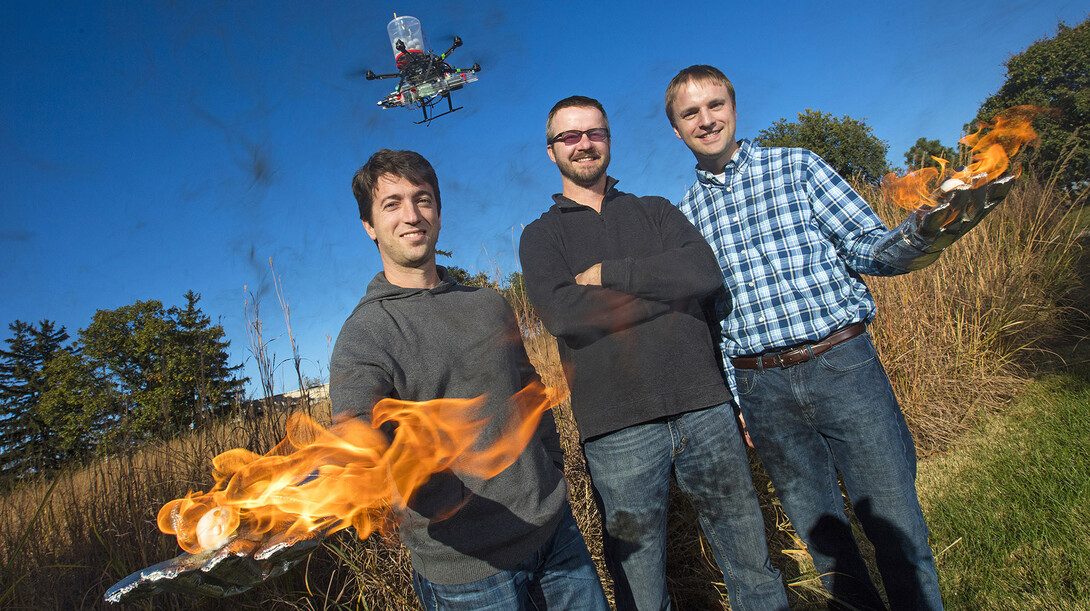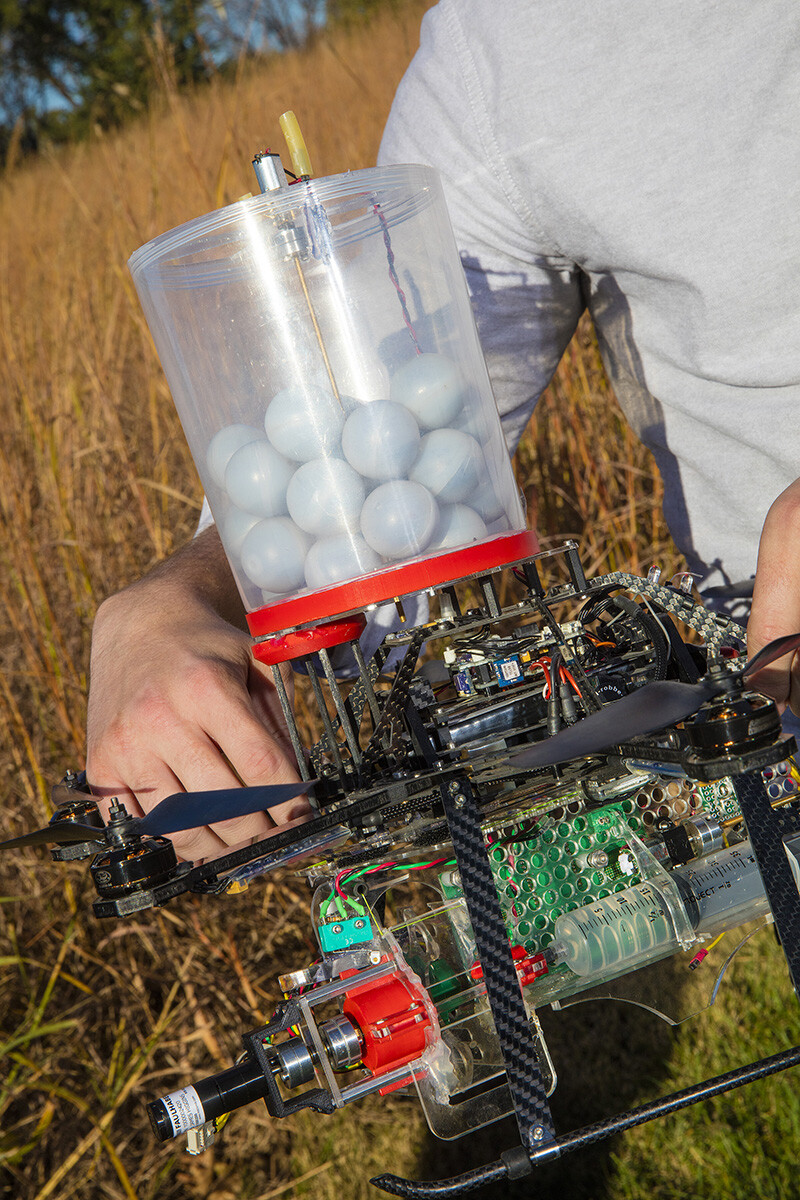
A new drone under development at the University of Nebraska-Lincoln could change the way wildfires are fought – and encourage the use of prescribed burns for conservation purposes.
The Unmanned Aerial System for Fire Fighting, or UAS-FF, is under development by a multidisciplinary team of university experts in drone technology, fire ecology, conservation and public policy.
The Great Plains, California and other locations around the world are seeing an increasing number of bigger and more intense wildfires in recent years, said Dirac Twidwell, a team member and a range ecology expert and faculty member in the Department of Agronomy and Horticulture.
Twidwell said it’s a trend that results from land management practices, including a decline in human use of fire for ecosystem management, as well as exotic species invasions, drought and climate change.
The aerial robot would have the ability to ignite and monitor fires in remote areas. Novel technology would allow it to operate in harsh environments with limited supervision, enhancing the capabilities of fire management personnel
“The idea is to provide a safe mechanism for people to perform fire management tasks with less risk and higher efficiency,” said Sebastian Elbaum, a computer science and engineering professor and drone researcher.
The team has successfully performed indoor tests on a prototype. Carrick Detweiler, a faculty member in the computer science and engineering department, said the researchers have been working with the Federal Aviation Administration and hope to have authorization from the FAA and fire departments for a field test of the fire-starting drone as early as March.
“Unmanned aerial devices have the potential to carry out key resource management strategies and could help us deal with something as big as the international increase in severe wildfires,” Twidwell said.
Prescribed burns, where grasslands are burned off according to a predetermined plan, are widely recognized as an effective conservation tool that eliminates invasive species, restores native plants and reduces the risk of wildfire. However, they are underutilized because of perceived safety concerns.
A recent study from Twidwell’s lab shows prescribed fires are actually less less risky to landowners than other commonly used management techniques, and using drones would further reduce the risks posed by lighting prescribed burns by hand and using all-terrain vehicles and suppression vehicles in rough and remote areas.
Many federal agencies use helicopters to ignite such areas, but it’s too costly to use helicopters on private lands.
Elbaum and Detweiler built upon their prior research as co-founders of the Nebraska Intelligent Mobile Unmanned Systems, or NIMBUS, Laboratory to design aerial robots small enough to fit in a firefighter’s backpack, yet smart enough to safely interact with the environment
The drones carry a cargo of ping pong-like balls filled with potassium permanganate powder. Before being dropped through a chute, each ball is manipulated and injected with liquid glycol, creating a chemical reaction-based flame after several seconds. A similar method now is used to start fires for conservation purposes with helicopters and hand-held launchers, Detweiler said.
“We wanted to use proven technology that the prescribed-burn community is already familiar with,” he said.
The drones would have the ability to drop the balls in a precise pattern over the landscape – on the perimeters and interior of a rectangular plot, for example. Detweiler said the robots could be programmed so they don’t fly into areas that are too hot or windy for safe use.
The team is seeking grant funding to develop the next generation prototype with more sophisticated sensing and actuation capabilities, including the ability to operate as a swarm.

Other team members are Craig Allen, research professor and director of Nebraska Cooperative Fish and Wildlife Research, and Lisa Pytlik Zillig, research associate professor at the university’s Public Policy Center. James Higgins, a mechanical engineering graduate student, designed the prototype’s mechanics, while Christian Laney, a computer science and engineering undergraduate student, was responsible for the control electronics.
The drones could be an especially effective tool in battling Eastern Red Cedar, an invasive tree species that some experts view as one of the region’s most serious ecological threats. It causes extinctions of many grassland plants and birds, collapses forage production important to the beef industry and is contributing to dangerous wildfires.
Detweiler and Elbaum said the drones also might be used in place of manned aircraft and hotshot teams of firefighters dropped by parachute in some wildfire-fighting situations.
“What we’re doing is supporting the expert and the user in the field,” Elbaum said. “The drone and the operator work together to make the job safer, more efficient and cheaper.”







